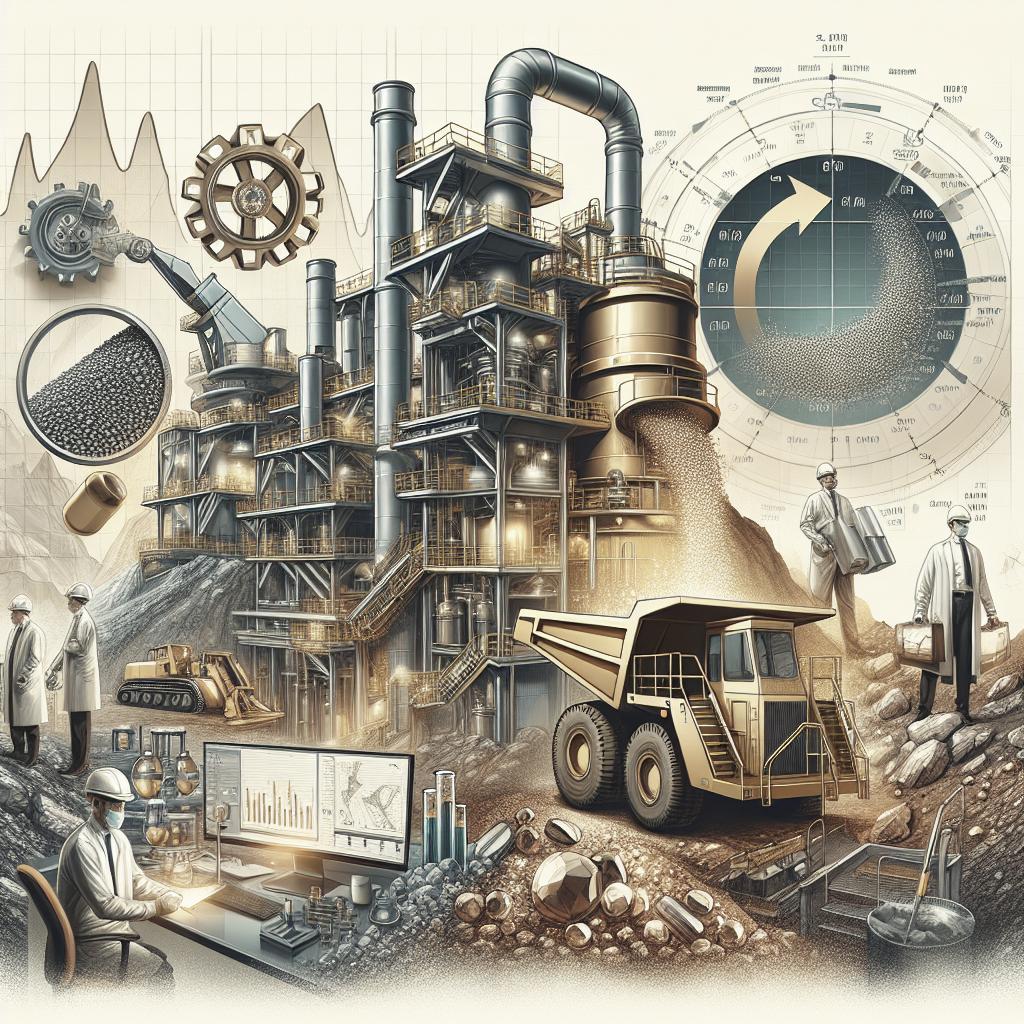<>
“`
Nickel has played a crucial role in modern technology and industry, from battery production to stainless steel manufacturing. Its extraction process is continually evolving, driven by the demand for more efficient and sustainable methods. This blog post navigates through the history, different types of ores like sulfides and laterites, and the mining techniques employed in nickel extraction. By delving into these aspects, we can better understand the progress made and the future direction of nickel extraction technologies.
History
The history of nickel extraction dates back to the 19th century, when the element was first isolated and identified. Initially, nickel was extracted through small-scale operations focused primarily on nickel sulfides. Over time, as industrial demand for nickel grew, advances in mining and smelting technologies significantly improved the efficiency and output of nickel production.
During the 20th century, the introduction of electrorefining and chemical leaching techniques marked a significant leap in nickel extraction. These methods allowed for the processing of lower grade ores and contributed to a steady increase in nickel supply. Recent years have witnessed further technological advancements aimed at reducing environmental impact and increasing the economic viability of nickel extraction.
Ores
Nickel ores are classified into two main types: sulfides and laterites. Each type presents different challenges and requires distinct extraction methods. The choice of method depends on the ore’s location, concentration, and geological form.
Sulfide ores are typically found deeper underground and are often rich in nickel content. These ores have been the backbone of nickel extraction for many years due to their relatively straightforward processing. Laterite ores, on the other hand, are found closer to the Earth’s surface and require more complex and energy-intensive extraction techniques.
Sulfides
Sulfide ores primarily consist of minerals such as pentlandite and chalcopyrite. The traditional method of extracting nickel from sulfide ores involves conventional mining techniques followed by ore concentration through froth flotation. This concentrated ore is then smelted to produce nickel matte, which undergoes further refining processes to yield pure nickel.
Recent advancements in sulfide ore extraction include hydrometallurgical techniques, such as high-pressure acid leaching (HPAL) and bioleaching. HPAL utilizes high temperature and pressure with sulfuric acid to extract nickel, while bioleaching employs bacteria to break down the ore. These methods offer improved recovery rates and reduced environmental impact compared to traditional smelting.
Laterites
Laterite ores are typically rich in iron and low in nickel content, posing a significant challenge for efficient extraction. Traditionally, laterite ores were processed using pyrometallurgical methods, which require high temperatures and substantial energy input. However, these methods proved to be environmentally unfriendly and economically challenging.
In recent years, hydrometallurgical processes such as HPAL, heap leaching, and atmospheric leaching have gained traction for processing laterite ores. These methods involve using chemical solutions to dissolve nickel from the ore, offering a more sustainable and economically viable alternative to traditional techniques. Innovations in reagent chemistry and solvent extraction have further improved recovery rates and reduced operational costs.
Mining
Nickel mining techniques have evolved significantly over the years, driven by the need for increased efficiency and reduced environmental impact. While open-pit mining remains a prevalent method for accessing nickel laterite deposits, underground mining techniques have improved substantially for extracting sulfide ores.
Modern mining operations now leverage advanced equipment and automation to enhance productivity and safety. Automation technologies such as autonomous drilling rigs and haul trucks reduce the human footprint in hazardous environments, while real-time data analytics assist in optimizing ore extraction processes. Sustainable mining practices, including the implementation of tailings management and land rehabilitation plans, have also seen increased adoption in recent years.
Lessons Learned
| Aspect | Details |
|---|---|
| History | Nickel extraction evolved from small-scale operations to advanced electrorefining and chemical leaching techniques over the 19th and 20th centuries. |
| Ores | Nickel ores are categorized as sulfides and laterites; the extraction method varies based on ore type. |
| Sulfides | Traditional methods include mining and froth flotation; modern advancements include HPAL and bioleaching for better recovery rates. |
| Laterites | Laterite ores have shifted from energy-intensive pyrometallurgical methods to sustainable hydrometallurgical techniques like heap and atmospheric leaching. |
| Mining | Technological advancements in equipment, automation, and data analytics have revolutionized nickel mining, improving efficiency and safety. |
“`


